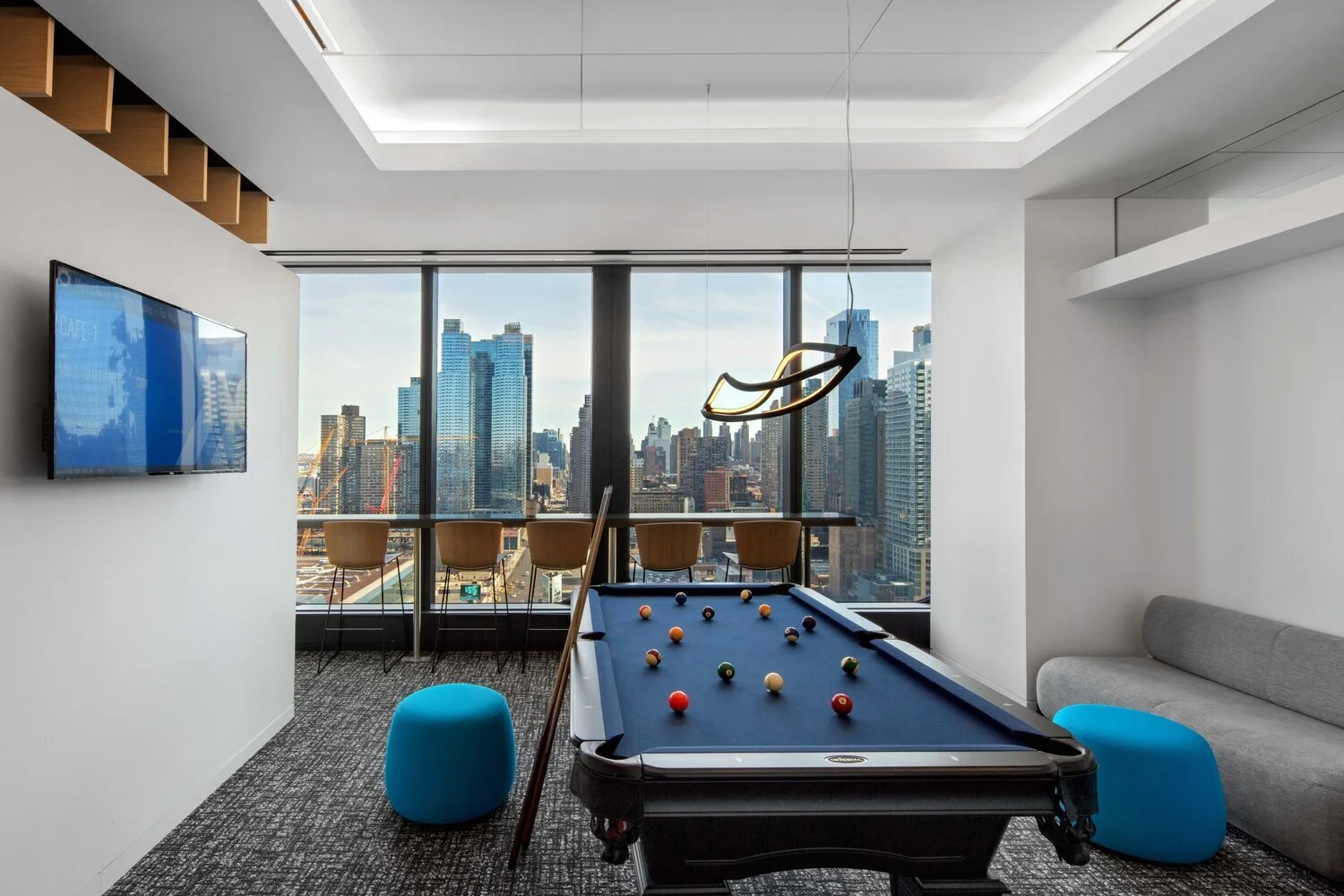The Third Place: the Heart of Community Building
THE THIRD PLACE:
THE HEART OF COMMUNITY BUILDING
Alexandra Koretski, Guest Blogger • January 2021
Ray Oldenburg, an urban sociologist, coined the term third place in his 1989 book The Great Good Place to define the heart of community building and a vital aspect of a healthy society. A third place is any social environment where the general public can voluntarily gather away from home and work and engage with their neighbors and strangers alike. Unlike home or work (first and second places, respectively), no one is required to be there. It is a place to relax, connect, and enjoy. You might recognize these spaces in coffee shops, libraries, parks, and any areas where people naturally congregate.
New York University, 181 Mercer Street, New York, NY (Davis Brody Bond and KieranTimberlake with Spacesmith providing FF&E). Illustration by Brooklyn Digital Foundry.
According to Oldenburg, there are eight main characteristics of a successful third place:
It is Neutral. The visitors are there voluntarily and have no obligation to stay or participate.
It is an Equalizer. Everyone is accepted, no matter their social or economic status.
Conversation. While not necessarily the only activity, conversation is the focus.
Accessibility. Third places are welcoming and accommodating to all who occupy them.
The Regulars. Regular visitors help set the tone and define the culture of the third place for newcomers.
A Low Profile. Third places should be comfortable for people from all walks of life, they are not excessive, extravagant, or pretentious.
Playfulness. They should be lighthearted and playful — invite people to engage with each other without tension or hostility.
A Home Away from Home. Third places are accepting of everyone and imbue a sense of ownership to all occupants.
Brooklyn Bridge Pop-Up Pool Plaza (Davis Brody Bond + Spacesmith)
In a place like New York City, it seems fairly easy for most people to find a third place that feels like home. No matter your interests or location, there are myriad restaurants, gyms, places of worship, barber shops, libraries, and parks where you could become a regular and find your place as part of a community. However, in the suburbs and rural areas, third places are unavailable to many Americans. For example, a 2009 study by Cleveland State University found that 29 percent of respondents could not think of anywhere to go to interact with their community. This could be a significant factor in the growing Loneliness Epidemic which has measurable negative health effects:
“Poor social relationships were associated with a 29 percent increase in risk of coronary heart disease and a 32 percent rise in the risk of stroke, studies have shown.”
In an interview with Steelcase, Oldenburg remarked that his current home in Pensacola, FL, does not make it easy to form a community of neighbors:
“Our first house was in a new neighborhood with a lot of young people and we all got together regularly. We didn’t let it get to be the sort of private, exclusive neighborhood that’s so common in subdivisions now. Our second and current home is in a subdivision and it’s got privacy built into it like you can’t believe. I thought, why do we even have sidewalks? There’s never anybody on them.... A livable city should have the daily necessities within walking distance, and we’ve moved so far from that. We have to get in the car for everything.”
He then created his own third place for friends and neighbors by setting up a bar in his garage that gets regular visitors several times a week.
Brooklyn Brewery Building 77 rooftop beer garden concept design (Davis Brody Bond + Spacesmith)
These challenges in building strong communities are only exacerbated by the Covid-19 crisis, with many third places shutting down and social gatherings being discouraged, even for small groups. There is some opportunity for virtual third places to provide a similar sense of belonging. For example, in multiplayer games one can interact and bond with people from all over the world with fictional avatars acting as the equalizer.
However, most social media platforms do not seem to have the same benefits as the third place, and in some ways they have the opposite effect — they can become isolating, even harmful to one’s emotional well-being. The algorithms of various social media platforms tend to push people to interact only with like-minded individuals, creating silos that reinforce already-held beliefs, rather than allowing for spontaneous meetings of people from all walks of life. Video calls also do not adequately replace actual social interaction. (Side note, Zoom Fatigue has become a new phenomenon in the workplace.)
Midwood Library, Brooklyn, NY (renovation by Spacesmith)
Oldenburg’s concept of third place is well known in the design industry with many mixed-use developments attempting to create spaces that meet the defined criteria in an effort to build vibrant communities. The same principles apply in workplace interior design by creating spaces away from the desk that encourage spontaneous interaction, inter-departmental collaboration, and provide break-out areas that relax and re-energize the occupants.
Staff lounge at MarketAxess Hudson Yards Headquarters, New York, NY (Spacesmith)
While third places within the workspace cannot completely replace external third places, we must be aware of the impact that social isolation has had this past year. Designing for social wellness will be more important than ever as we learn how to feel safe gathering again. In Oldenburg’s own words flexibility is key:
“Corporations used to believe that the longer they could keep each employee at the desk, the more productive they’d be. That’s just been shot to pieces. Managers found out that if they let people work where they want and when they want, productivity went up. The marketplace is highly competitive and it’s important to be first with new innovations. If you get people sitting together, talking together, innovation comes quicker. And I think that’s going to be the thing for business and industry for a long time.”







